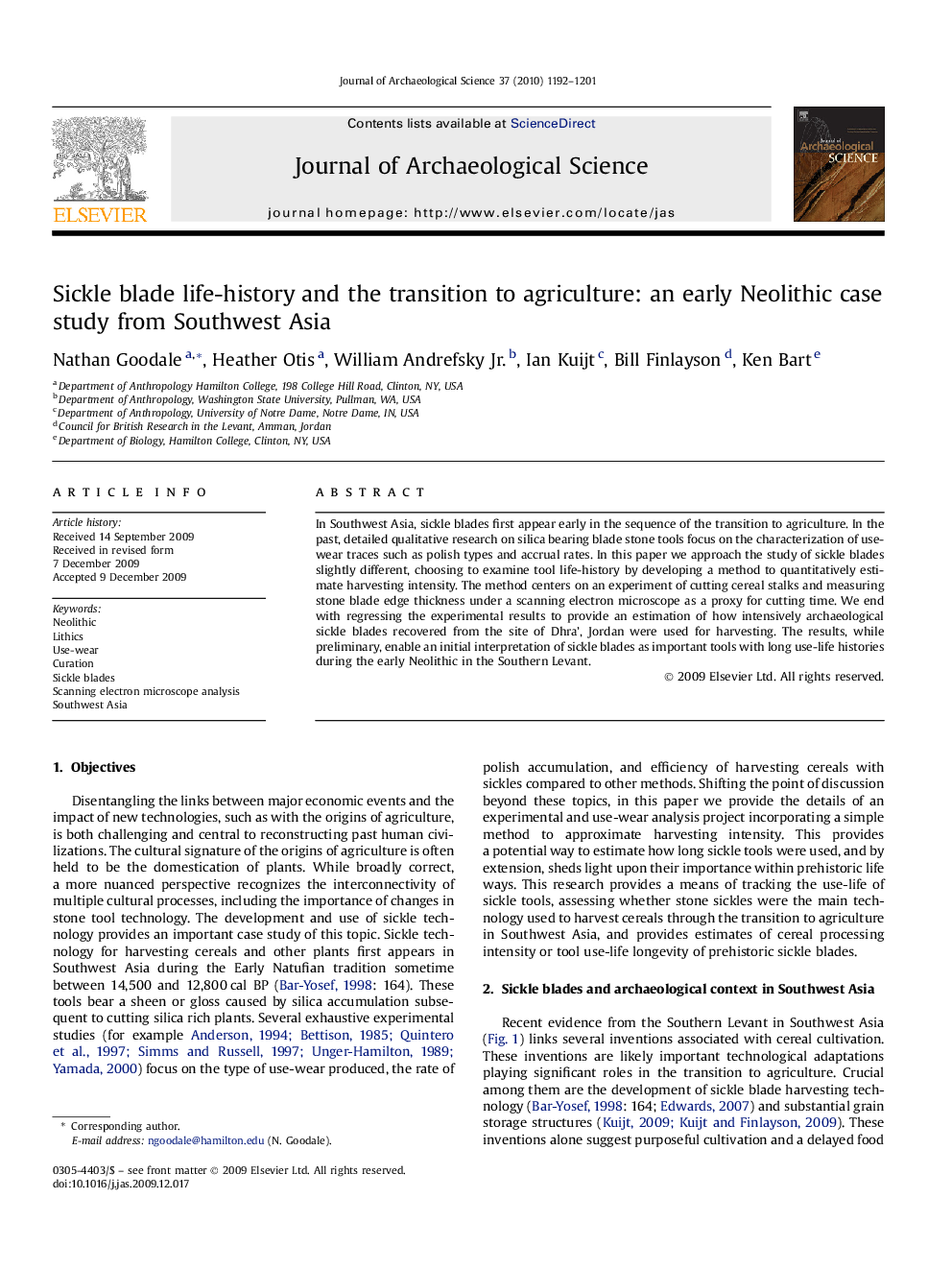| کد مقاله | کد نشریه | سال انتشار | مقاله انگلیسی | نسخه تمام متن |
|---|---|---|---|---|
| 1036741 | 943896 | 2010 | 10 صفحه PDF | دانلود رایگان |

In Southwest Asia, sickle blades first appear early in the sequence of the transition to agriculture. In the past, detailed qualitative research on silica bearing blade stone tools focus on the characterization of use-wear traces such as polish types and accrual rates. In this paper we approach the study of sickle blades slightly different, choosing to examine tool life-history by developing a method to quantitatively estimate harvesting intensity. The method centers on an experiment of cutting cereal stalks and measuring stone blade edge thickness under a scanning electron microscope as a proxy for cutting time. We end with regressing the experimental results to provide an estimation of how intensively archaeological sickle blades recovered from the site of Dhra’, Jordan were used for harvesting. The results, while preliminary, enable an initial interpretation of sickle blades as important tools with long use-life histories during the early Neolithic in the Southern Levant.
Journal: Journal of Archaeological Science - Volume 37, Issue 6, June 2010, Pages 1192–1201